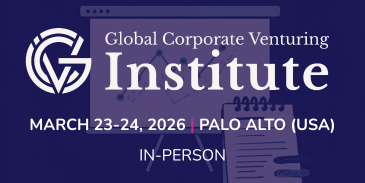How do you make free education commercially viable, asks TAG Assessment managing director Matt Wingfield.
It can be argued that the concept of distance learning has been around since the early 19th century, when students from Australia were granted overseas access to study a number of courses from prestigious UK universities such as the London School of Economics and the University of London. In more recent times, it has been the UK’s Open University that has ultimately shaped the modern distance learning approach that we know today; by combining teaching videos and content publishing alongside regional and local courses and support services.
Despite this, distance learning has only really started to receive widespread popularity today, with the arrival of massive online open courses (MOOCs). The obvious advancements in IT and communications technology employed by MOOC providers is one major reason for their growing applicant numbers. Now people all over the world are able to join live lectures, discuss course topics with fellow peers and view course materials at any time they want, bolstering the accessibility and appeal of education to the masses. However, as technology solved the communication issue, another has become apparent; can MOOCs ever become commercially viable?
The big ad-venture
Today university spending is big business – $400bn a year is spent on US universities; that’s more than Amazon, Google, Facebook, Twitter, Microsoft and Apple combined. Such has been the rapid growth of MOOCs. It was only a matter of time before the industry became flush with interest from investors and the venture capitalist community; all wishing to get a slice of the action. Just this year, Coursera, a leading MOOC in the US, raised $63 million in funding from various venture capital firms after securing an initial $23 million in 2012. Similarly, another major US-based MOOC, Udacity, raised $20 million in capital last year. Of course, these funds are not given out on pro bono terms; inevitably, the basis of every investment is made with an expectation of a return.
A number of MOOC providers have been making headway with establishing ways to generate revenues. Ideas have ranged from licensing online course materials to universities to generating revenues by allowing advertisers to display banner ads within the live teaching platforms. Though these ideas are all viable to some extent, none of them are scalable enough to generate a consistent skyward return over time, which is what all investors are primarily seeking. Coursera are thought to have earned around $1million in revenue this year certifying when a course has been completed whilst burning their way through as much as $2million every month. Udacity in the last few weeks has given up on academia altogether to focus on corporate training. Most worrying for MOOC investors is that student drop-out rates remain high whilst courses offer little more than flat content.
If MOOCs are going to truly take on the traditional university model, then they have to go beyond offering content and courses and then simply certifying that a course has been completed. They need to improve the ‘stickiness’ of their offering, providing students with intuitive ways to collaborate and develop their ideas, as they would if they were sitting together in the same classroom; they have to award and accredit qualifications that have value with learners and employers, and they need to do all of this at scale.
A question of creditability
By implementing modern assessment and peer-reviewing technologies, MOOC providers can turn their free online courses into creditable paid-for courses. Doing this means that people all over the world not only benefit from an array of excellent education opportunities, and the ability to learn collaboratively with others from around the world, but after taking a course, they would also get authoritative recognition for their achievement and participation. As a result, students could record this on their CVs or employment documents and use them to secure employment.
The majority of MOOC courses are provided freely, primarily because they cannot currently be rated as strongly as qualifications and degrees from traditional educational institutions. This is largely because MOOCs have not yet been able to establish a way of delivering assessment of student work at scale and in a reliable and consistent manner. Current MOOC assessments are performed online, generally through multiple choice examinations. This leads today’s MOOCs to have a technical subject bias; with peer assessment being unreliable and sometimes difficult to perform. Consequently the industry is today somewhat hamstrung because assessors can only partially assess students’ learning abilities and students find it difficult to engage with other learners and gain valuable collaborative feedback on their work. Then there is the challenge of one or more tutors providing effective and timely feedback and assessment when individual MOOC courses often have enrolments of several thousand students. However, combining newer technology along with a refined assessment methodology, such as Adaptive Comparative Judgement (ACJ), presents a way for MOOCs providers to create a reliable teaching and assessment platforms for subjects that go beyond the purely technical.
Adaptive Comparative Judgement, or ‘ACJ’ was developed by Professor Richard Kimbell of London University’s Goldsmiths College and Alastair Pollitt, Director at Cambridge Exam Research; their methodology was later incorporated into a web-based technology. The UK is at the forefront of assessment technology, in particular for online assessment. With this ACJ technology, MOOC providers can review a set of almost any student work; including oral or video-based evidence on a local or international scale, and with significantly higher assessment reliability than more traditional, unscalable mechanisms. Such relatively new assessment methods have been successfully tested at scale and in a variety of educational contexts, and offer MOOC operators the opportunity to expand the type of tutor, peer assessment and accreditation options that they are able to offer beyond simple multiple-choice testing. Furthermore, it allows them to assess a wider range of knowledge and practical skills, including so called ‘soft’ employability skills.
Open for business
MOOC providers that can effectively assess will be able to explore the ways in which they can monetise their range of courses. They will be able to offer intuitive reliable, consistent accreditation at scale, as well as being able to provide timely, intuitive and easily managed peer-review and student feedback. With the popularity of online learning continuing to grow, MOOC providers will benefit from recurring revenues through offering paid for accredited courses that engage and retain learners. Furthermore, the growing number of world-class universities establishing themselves on MOOC platforms will further drive this demand amongst eager students worldwide. Just the potential of this alone is plenty reason enough for the venture capitalists and investors to keep their faith and believe in the MOOC.








